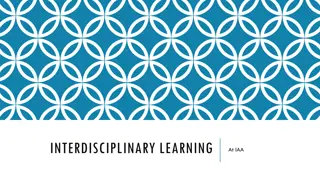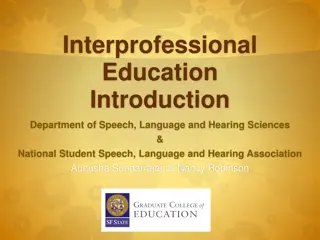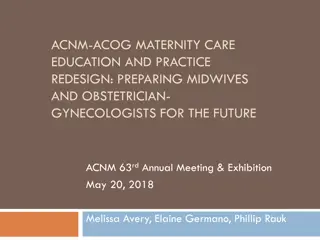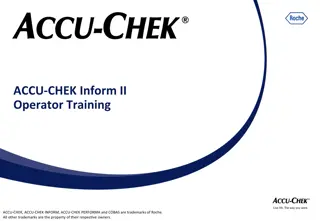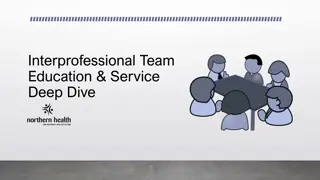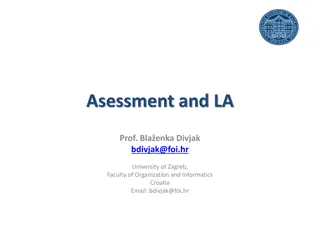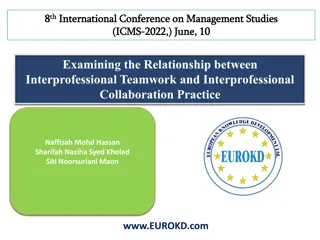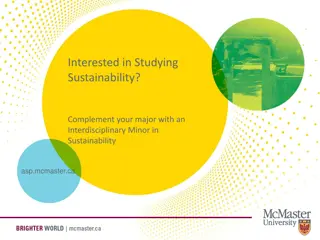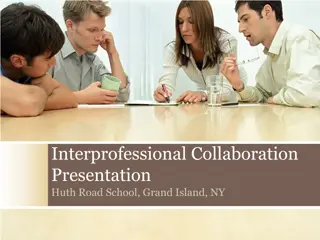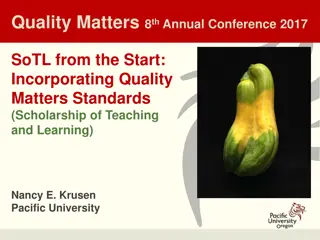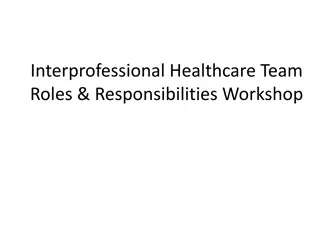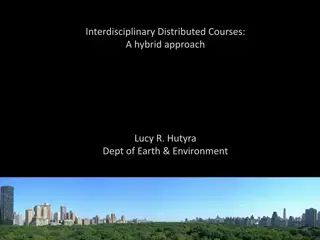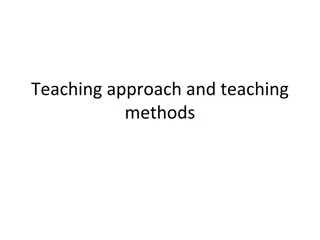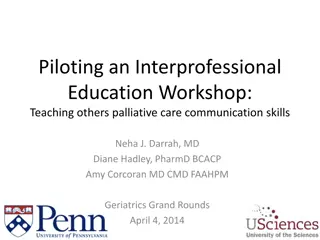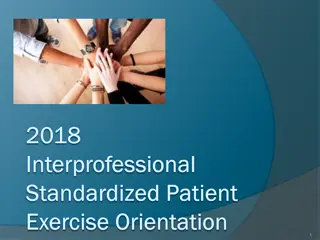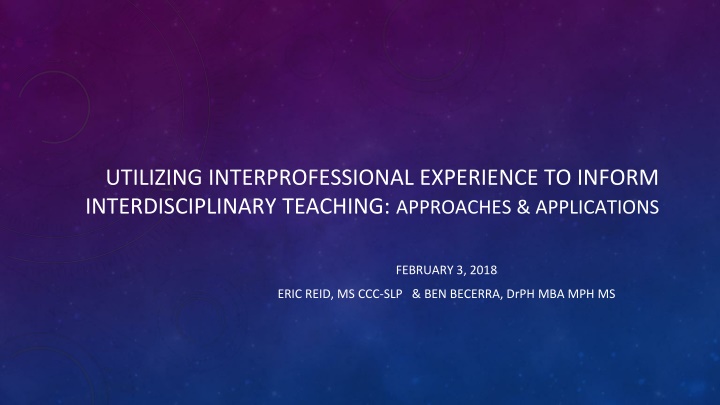
Enhancing Interdisciplinary Teaching through Interprofessional Experience
Explore the correlation between clinical and academic education, challenging assumptions on adult and child learning, and transitioning from pedagogy to andragogy in clinical disciplines. This insightful content delves into how teaching practices shape bedside manner and impact diverse disciplines, empowering educators to foster a more holistic approach to teaching.
Download Presentation

Please find below an Image/Link to download the presentation.
The content on the website is provided AS IS for your information and personal use only. It may not be sold, licensed, or shared on other websites without obtaining consent from the author. If you encounter any issues during the download, it is possible that the publisher has removed the file from their server.
You are allowed to download the files provided on this website for personal or commercial use, subject to the condition that they are used lawfully. All files are the property of their respective owners.
The content on the website is provided AS IS for your information and personal use only. It may not be sold, licensed, or shared on other websites without obtaining consent from the author.
E N D
Presentation Transcript
UTILIZING INTERPROFESSIONAL EXPERIENCE TO INFORM INTERDISCIPLINARY TEACHING: APPROACHES & APPLICATIONS FEBRUARY 3, 2018 ERIC REID, MS CCC-SLP & BEN BECERRA, DrPH MBA MPH MS
TEACHING PRACTICES INFORM BEDSIDE MANNER Biased by HOW we were taught and how we learn Difficult to change perspective later Responsibility for educators Taught without mercy, practice without empathy Professorial modeling connects academic attitudes with clinical Transition from learning to practice to teaching impacts all disciplines
Background behind clinical education Correlation between clinical and academic instruction Learning theory Extra-clinical application Group activity & discussion
ASSUMPTIONS (DISPUTED) Adults learn differently than children Pedagogy - study and practice of teaching children Andragogy study and practice of teaching adults Knowles (1968) Theory: Students in clinical disciplines learn like adults Reality???
Adult Learning Independent Internal motivation Previous experience Diverse perspective Change promotes learning Demands relevance https://www.educatorstechnology.com/2013/05/awesome-chart-on-pedagogy-vs-andragogy.html
DO ADULTS AND CHILDREN LEARN DIFFERENTLY? Mature learning Considerable overlap between frameworks Better labels more consistent pattern Early learning (Pedagogy) Mature learning (Andragogy) Field specific Early Learning
CLINIC TO CLASSROOM New clinical Instructors and their students go through similar processes Novice to expert Dependence (on previous syllabus) to creative, independence Reliance on relevant, extrinsic experience to integrated, synergistic understanding Movement from preparation-focused to action-focused Pedagogy to andragogy
CLINIC TO CLASSROOM Teachers in clinical programs Pros Content experts Clinical experience/authority Relevance to the field Identify as clinicians Cons Limited training as educator Limited experience fostering academic development Reliance on own student history Identify as clinicians
BEHAVIORAL MODELS (SKINNER) Beginning learners Extrinsic motivation (punishment/reward) Clinical practice Token economy & response cost Praise vs. corrective feedback Academic correlates Tests Q & A
COGNITIVE MODELS (PIAGET) Clinic & Classroom Meta analysis of goals & processes More examples from various fields Maturing skill set Tapping into and transforming existing knowledge
SOCIAL LEARNING (VYGOTSKY) Clinic & Classroom Interaction between learner and environment Carefully constructed, responsive environment ZPD scaffolding Responsive to needs of all the stakeholders More silly putty!!!
Therapy is like silly putty (so is teaching) 1. Find client where they are 2. Negotiate goal with stakeholders 3. Stretch toward goal, fast but not too fast 4. Repair as needed 5. Repeat
COMBINED MODELS Scaffold to avoid punishing Modify difficulty level to suit the needs of the student Grades & corrective feedback Modify tasks so successes outweigh failures Discuss expectations, current challenges, and future goals
A CASE FROM NON-CLINICAL ENGAGEMENT Statistical Consulting Listening is key Students may not know exactly what they don t know! Beginning learning One-on-one interaction Bi-directional feedback Understand another perspective
STATISTICS AND RESEARCH Quantitative Research Dealing with first reactions: UGH Statistical vs. Practical Significance Connecting with your audience Metrics for success
MORE STATISTICS AND RESEARCH Qualitative Research Exploration Facilitate but don t hand-hold Storytelling Grounded Theory Audio/Visual
RESEARCH ETHICS & THE CLASSROOM The Belmont Report Respect for persons Beneficence Justice Application Autonomous learning Busy work Adherence to intended outcomes
The Bottom Line How can your professional experience/understanding augment your teaching style?
Brainstorm Session 1. What is your profession? 2. What skills or personal characteristics are needed to carry out your job? 3. What ABOUT those skills & characteristics makes them effective? 4. How might that effectiveness be leveraged for teaching? 5. Bonus: Try considering that in an online environment!
REFERENCES Knowles, M. S. (1968) Andragogy, not pedagogy. Adult Leadership, 16(10), 350-352. Riveros-Perez, E. & Rodriguez-Diaz, J. (2018). The journey from clinician to undergraduate medical educator involves four patterns of transformation. Advances in Medical Education and Practice, 9, 7-15. doi: 10.2147/AMEP.S146384 Loughran, J. (2012). What expert teachers do: Enhancing professional knowledge for classroom practice. Routledge.


